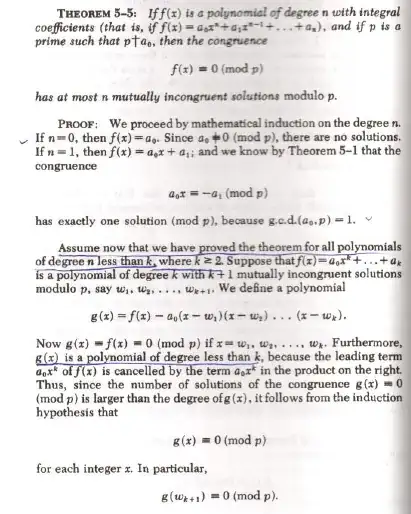I have a question about the below proof, taken from the book by George Andrews, Number Theory, page 72 of Section 5-4. Below is the main part of it.
I am on board until it says near the bottom:
Thus, since the number of solutions of the congruence $g(x)\,\dots\;$ it follows from the induction hypothesis that $g(x)$ is congruent to $0$ mod $p$ for each integer $x$.
I see that $g(x)$ is a polynomial of degree less than $k$. And so $g(x)\equiv 0\bmod p$ can never have $k$ or more incongruent solutions. But I am not following the book's line of reasoning.
Thanks! I understand the part of the proof after this page.

Also, how do you reach the conclusion that $g(x)=0$ has $k$ solutions? I think that the fact that $g(x) \equiv 0 \bmod p$ has at least k solutions rather follows from that $g(w_j) = f(w_j) − 0 = f(w_j) \equiv 0 \bmod p$ for $j=1,...,k$.
I don't really see how $g(x) \equiv 0 \bmod p$ for all integers $x$ avoids any contradiction either.
– Paradox Sep 30 '21 at 18:46